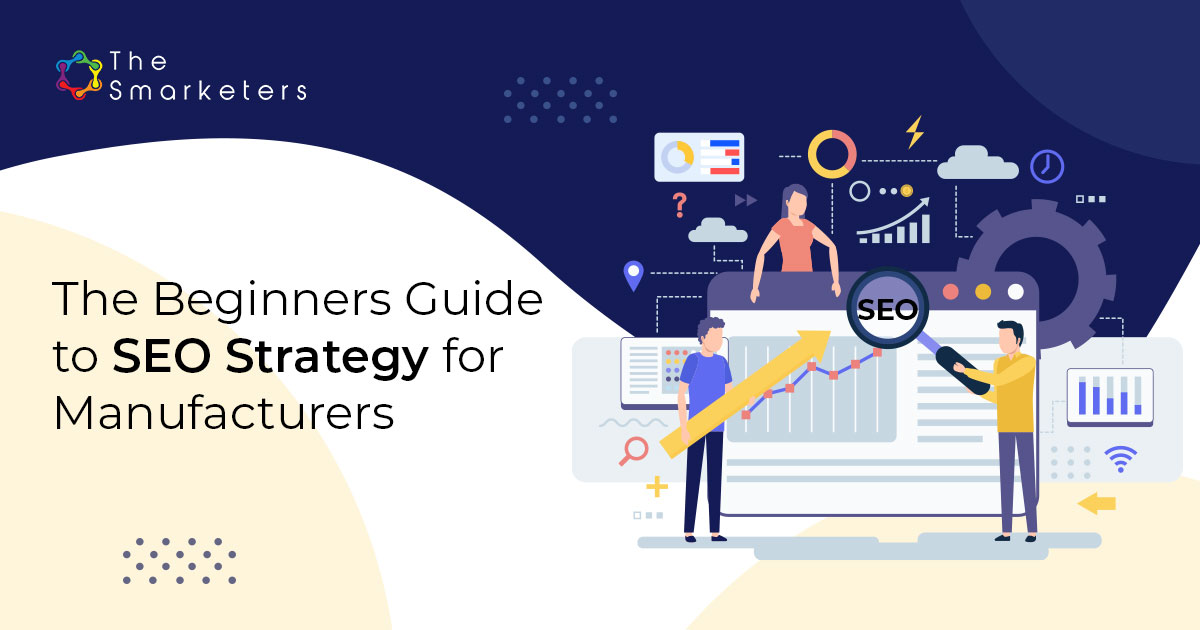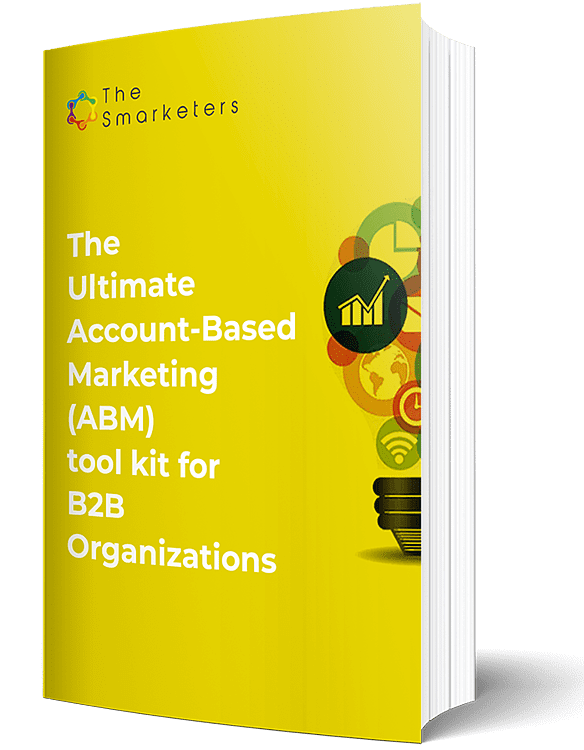Introduction
Account-Based Marketing (ABM), also known as key-account targeting, is a strategic marketing approach that identifies best-fit accounts and treats them as a market of one to drive an effective marketing strategy. In simple terms, ABM focuses on identifying accounts (i.e. companies, individuals, user groups, etc.) that match their ideal clients and targets the key decision-makers in those establishments with personalized messages and content through respective marketing and advertising campaigns.
Especially when it comes to B2B businesses, ABM has gained a lot of traction in the past few years. Since the marketing strategy is personalized for each target component, precise lead generation can be expected.
Why ABM?
Instead of casting a wide, generic net to harvest leads, ABM focuses on defining selection criteria first that will help target specific, best-fit accounts. An Ideal Customer Profile (ICP) based on the organization’s product offering or services is drawn up and then customized content and messages are targeted to the buying team within the chosen accounts. Hence, ABM results in little to no ‘wastage’ when it comes to marketing efforts. This change in approach is commonly referred to as “flipping the funnel”, where an ABM-driven strategy offers a more linear and targeted approach as opposed to traditional marketing.
ABM today has become so popular amongst high-value companies, especially in the B2B domain, that 80% of marketers who track ROI believe that ABM significantly outperforms other marketing strategies. The flipped funnel ensures that only the most suitable and valuable accounts are chosen, maximizing the effects of engagement.
Why ABM Faces Resistance from Sales
If traditional marketing approaches are to be believed, the more leads one has, the better the conversion rate. While this belief has a modicum of merit in some domains, it is not true for all industries and company sizes. Most often, in order to ensure that marketing ROI is maximized, it is important to use a focused approach that targets relationships in the highest opportunity, highest-value customer accounts. This is the reason why Account-Based Marketing is especially useful for high-value businesses. But what is considered a breakthrough strategy by marketing executives, is often looked at with trepidation by the sales fraternity.
Come to think of it, it is quite understandable that ABM may receive pushback from Sales. After all, ABM advocates working with fewer leads to gain better results; a strategy that is diametrically opposed to the traditional concept of working with a full sales funnel. Not having a wide net is quite understandably a risky proposition for sales personnel.
Sales and Marketing Alignment – Why is it Important?
As hard as it may be for Sales to take Account-Based Marketing seriously, we cannot achieve success with ABM without sales buy-in. In fact, all account-based strategies need cross-functional inputs from all avenues of the organization in order to create a holistic sales and marketing strategy. Particularly with respect to marketing and sales, it is important to destroy the culture of working in ‘silos’ and unite to form a strong ABM roadmap. After all, both teams have a common objective: facilitating personalized, valuable interactions with key accounts in order to maximize revenue. While marketing is responsible for designing activities to persuade target customers, sales need to establish a rapport with each stakeholder and achieve lead conversion. This unified approach to lead generation and conversion is known as ‘alignment’.
Although sales and marketing alignment has always been beneficial for business, especially in the case of ABM it is imperative. It is important that both functions understand that their success is interdependent. For instance, in order to create content that resonates with the target audience, the marketing team needs to get insights into market trends and customer expectations from the sales function. Correspondingly, marketing plays a major role in zeroing in on the ideal leads that sales can pursue without any ‘wastage’ of effort. In fact, Marketo reports that about 50% of sales time is wasted on unproductive prospecting, in traditional methods.
The Benefit of Alignment
According to MarketingProfs, companies that have tightly aligned sales and marketing teams experience 36 percent higher customer retention rates and 38 percent higher sales win rates. This goes to show that companies can expect a higher rate of lead conversion when there is marketing and sales alignment.
Effective Tactics to Get Sales on Board
Knowing how important it is for both sales and marketing functions to agree on an ABM approach, it becomes crucial that sales are gotten on board right at the beginning of implementation. In order to ensure that the sales team embraces ABM with as much gusto as the rest of the organization, here are a few guidelines to be followed.
- Ensure that Sales understands the merits of ABM
For the longest time, ABM has been misconceptualized as a predominantly Marketing function. This has led to Sales being relatively ignorant of what ABM is and why it is beneficial for the entire organization. This is why ABM enforcers must first ensure that Sales has a clear understanding of the merits of ABM. From a Sales perspective, ABM provides a well-researched, streamlined lead pool that cuts down on the probability of wasted sales effort. This makes it possible for sales executives to only deal with highly qualified leads who are already invested in the idea of the offering.
While this may seem like a simple advantage. In the context of sales, it is not so. Sales functions often have to go way and beyond to convert the lead to long-drawn-outs. This can mean much back and forth, regional assignments involving immense travel and long-drawn-out lead nurturing phases. With ABM, companies can ensure that all of this effort is cinched and only made where absolutely necessary.
Added benefits of the zero-waste approach in ABM include improved ROI, a better understanding of the company’s target audience, a personalized experience for the customer, and easy tracking and measuring campaign success.
- Let Marketing decide the ICP messaging and Sales handle the conversion
In an aligned organization, both marketing and Sales are involved in decision making right from lead selection to conversion. In spite of the fact that the alignment is largely beneficial to the company, oftentimes it is better to have clear-cut, complementary roles that both the functions are expected to play. For instance, Marketing can take insights from Sales before establishing the Ideal Customer Profile (ICP); But once this is established, Marketing should be responsible for deciding what the target messaging should be. Defining the messaging requires knowledge of the customer personas and market trends, something that Marketing is naturally adept at.
The sales function can take over at this point and focus on personalized follow-up with each lead from the narrow sales funnel. Although Marketing can pitch in with insight on which leads are the most likely to convert first, lead nurturing and conversion practices should primarily be a Sales effort. Sales can share pain points or roadblocks encountered during nurturing with the marketing team for future reference.
- Streamline the process with Data Analytics
We know that ABM does focus on having a narrow sales funnel, however it might be a good idea to use the power of analytics to ensure that the selected leads are the best ones. With the help of data analytics, companies today can use insights that drive a streamlined lead selection process. This insight also makes it possible for sales teams to make highly focused and targeted sales pitches. These tools help Marketing filter and cut down on ‘wasteful’ leads while providing more time for sales teams to focus on more viable options.
In Conclusion
With organizations seeing considerable results with the implementation of ABM, we are bound to see a more unified vision between marketing and sales efforts. While ABM stands for Account-Based Marketing, it needs sales insights to actually function. Although getting sales teams to get on the ABM bandwagon may be a bit of a hurdle, companies need to drive it in that ABM has merits not just for other functions of business, but for sales as well. We must ensure that to get buy-in, the sales function sees why ABM is the most efficient solution to drive business revenue.













